“There are those who seek knowledge for the sake of knowledge; that is Curiosity.
There are those who seek knowledge to be known by others; that is Vanity.
There are those who seek knowledge in order to serve; that is Love.” Bernard of Clairvaux
 There are places one can always go and find peace. Growing up in a city I often felt the need for that calm, quiet place where the inner voice could be heard without the noise and distraction of the world. I would, of course, go to the moors when I could. I always have… the high, desolate places are my heart’s home. Sometimes, though, it was the woods… the Fall woods that sloped down to the canal and on to the River Aire that gives Airedale its name. It was the place I had walked with my grandfather and to which I have always been able to return, finding that shadowy companionship under the green canopy.
There are places one can always go and find peace. Growing up in a city I often felt the need for that calm, quiet place where the inner voice could be heard without the noise and distraction of the world. I would, of course, go to the moors when I could. I always have… the high, desolate places are my heart’s home. Sometimes, though, it was the woods… the Fall woods that sloped down to the canal and on to the River Aire that gives Airedale its name. It was the place I had walked with my grandfather and to which I have always been able to return, finding that shadowy companionship under the green canopy.
I learned the names and cycles of the trees, learned the legend of the barguest… the great black dog the size of a calf, with flaming eyes like saucers which, if you gazed into them without running water between you, meant death. It was, perhaps, a strange tale to tell a small child, and every large dog’s footprint in the mud, even now, takes me back to that wood and that delicious frisson of childhood terror, half believed.
 But I learned other tales too, of fairies and boggarts, undines and dryads. And I learned the local legends that were written on the landscape we walked. Many of these tales were woven around the ruins of Kirkstall Abbey.. and this was the other place I would go to seek silence. The Cisterican Abbey was founded in 1152 by Abbot Alexander and a dozen monks. It was built with the local millstone grit quarried from the fall across the river and its stones are the colour of home. It grew into a huge and beautiful place that remained until the Dissolution of the monasteries, offering a haven of learning and worship, a place of service and care for the sick.
But I learned other tales too, of fairies and boggarts, undines and dryads. And I learned the local legends that were written on the landscape we walked. Many of these tales were woven around the ruins of Kirkstall Abbey.. and this was the other place I would go to seek silence. The Cisterican Abbey was founded in 1152 by Abbot Alexander and a dozen monks. It was built with the local millstone grit quarried from the fall across the river and its stones are the colour of home. It grew into a huge and beautiful place that remained until the Dissolution of the monasteries, offering a haven of learning and worship, a place of service and care for the sick.
The Cistercian Order, under Bernard of Clairvaux, who was also responsible for the Rule of the Knights Templar, turned to a faith that was immediate, living Love. The monks worked hard, and evidence of this can still be traced in the local landscape through the mill stream and the forge. You can see the innovation in the buildings that remain of the great Abbey, with the drainage system that carried water through the kitchens and infirmary.
 You can see the love of their God that wrought a glorious, lofty church, designed, perhaps, to make the worshipper feel small, a child within the Presence of the Divine, while singing Its praises with every stone. And in the sheltered confines of the cloisters, it is not hard to see the silent footfall of devotion.
You can see the love of their God that wrought a glorious, lofty church, designed, perhaps, to make the worshipper feel small, a child within the Presence of the Divine, while singing Its praises with every stone. And in the sheltered confines of the cloisters, it is not hard to see the silent footfall of devotion.
I often sought solace in its peace in the past, but was delighted on my last impromptu visit to find that parts of the Abbey that were always closed have been made safe and opened now to the public. It was an excited child who finally climbed the staircase in the Abbot’s House to see where they led… all my childhood they had been beyond the fences. That they actually led nowhere did not matter… they carried me up.
 It was not the first time, however, I had enjoyed unprecedented access… some thirty years ago, when home on a visit when I was living in France, a kindhearted guard had allowed me up the worn staircase, locked, all my life, behind its iron grille, and taken us out onto the dormitory floor, now open to the winds, but bearing the traces still of its former occupants.
It was not the first time, however, I had enjoyed unprecedented access… some thirty years ago, when home on a visit when I was living in France, a kindhearted guard had allowed me up the worn staircase, locked, all my life, behind its iron grille, and taken us out onto the dormitory floor, now open to the winds, but bearing the traces still of its former occupants.
So, I wandered amongst the ruined beauty once more. Tracing the lovers knot on the pillar of the nave.. carved, says local legend, by one of the monks who fell in love with the daughter of the innkeeper. I remembered again the tales of the tunnel from monastery to inn, and the awful punishment of being immured.. the coffin spaces in the chapterhouse were perfect for this in childhood’s imagination….
 I recalled the ghostly figures that still walk where the old forge stood… seen by many a nightworker there. With Yorkshire grit they refuse to elaborate, but their eyes tell tales… And I still could not help looking for the magical passageway that appeared one sleepy afternoon, when a farmer dozed against the wall. It led to a ‘gurt house place’, where a black horse and a black cockerel guarded a great chest before a blazing hearth… and chased him away before he could open it.
I recalled the ghostly figures that still walk where the old forge stood… seen by many a nightworker there. With Yorkshire grit they refuse to elaborate, but their eyes tell tales… And I still could not help looking for the magical passageway that appeared one sleepy afternoon, when a farmer dozed against the wall. It led to a ‘gurt house place’, where a black horse and a black cockerel guarded a great chest before a blazing hearth… and chased him away before he could open it.
It is a beautiful place in its own right and a surprising one to find in what was always the industrial heart of the city. That it survives still in such grace is a gift. To go back, armed perhaps with a little more knowledge and understanding, was a delight… but the real gift was, I think, to touch the heart of emotion through the child who walked within me and borrowed my eyes for a little while that day.









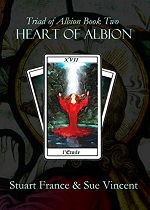






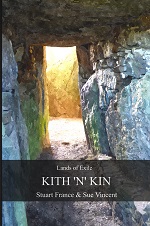



















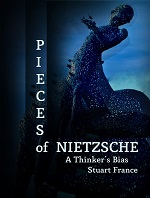
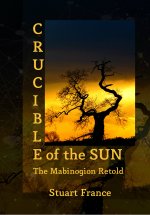


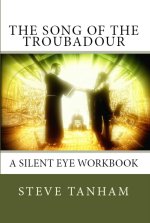


Ah, the barguest, wonderful stuff – and in other places too – I recall it from East Anglia, as an Anglo-Saxon legend I think. But the flaming eyes get to me. Adrian
LikeLike
Funnily enough Adrian, I was just reading up on an old tale of the barguest from Yorkshire… I may have to write it up.:)
LikeLike
Oh do it – looking forward to it!!! Have just remembered the name of the East Anglian hound – Black Shuck – and again the flaming eyes, and if you look into them you’re dead within a year! A
LikeLike
Yep.. that’s the Anglian one, and we have a similar manifestation that was seen in a local church in Buckinghamshire too.
LikeLike
Must be real then if so many are seen, now that would be a photo, have to be careful with the exposure of the eyes, got to get the redness, had a bad night’s sleep?; and the bait? Kennomeat…? 🙂
LikeLike
Kennomeat? Haven’t heard of that for decades 🙂
I’ll leave the photography to you on this one, Adrian, thank you very much …And make sure there is running water between…
LikeLike
So, Kennomeat dates me – haha! Well Kennomeat has got it right … 🙂 …
LikeLike
You and me both apparently 😀
LikeLiked by 1 person
Reblogged this on theowlladyblog.
LikeLike
Reblogged this on MARSocial Author Business Enhancement Interviews.
LikeLike
Great shots of a stately abbey, imbued with so much history!
LikeLike
Thanks, Eliza..one of my favourite places as a child
LikeLike
Pingback: Photo prompt round-up: Arch #writephoto - Scott Andrew Bailey